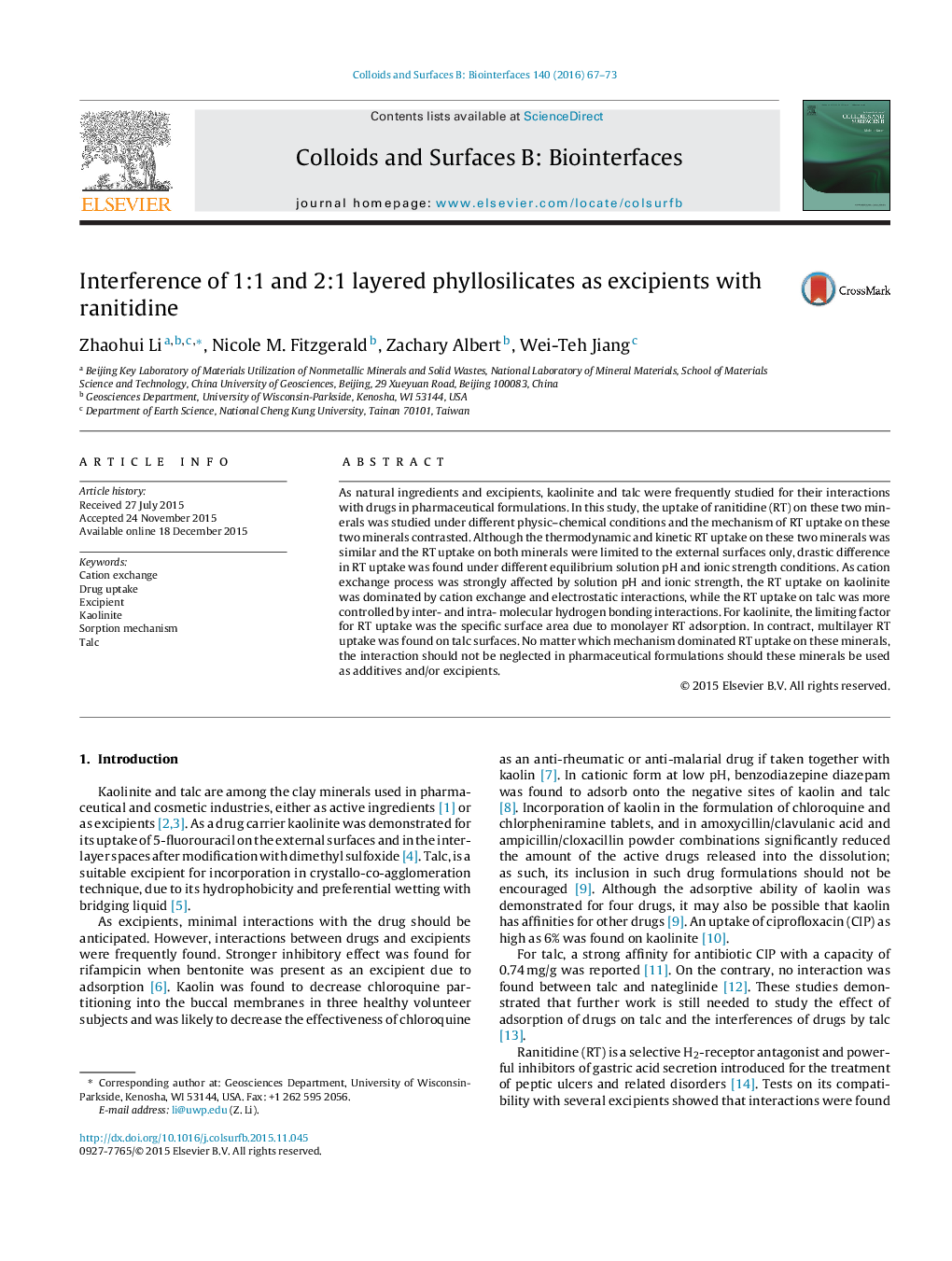| کد مقاله | کد نشریه | سال انتشار | مقاله انگلیسی | نسخه تمام متن |
|---|---|---|---|---|
| 599090 | 1454264 | 2016 | 7 صفحه PDF | دانلود رایگان |
• Uptake of ranitidine (RT) on different clays governed by different mechanisms.
• Cation exchange was mainly responsible for RT uptake on kaolinite.
• Hydrogen bonding affected RT uptake on talc with multilayer sorption.
• The high RT adsorption suggested strong interference when the clay minerals were used as excipients.
As natural ingredients and excipients, kaolinite and talc were frequently studied for their interactions with drugs in pharmaceutical formulations. In this study, the uptake of ranitidine (RT) on these two minerals was studied under different physic–chemical conditions and the mechanism of RT uptake on these two minerals contrasted. Although the thermodynamic and kinetic RT uptake on these two minerals was similar and the RT uptake on both minerals were limited to the external surfaces only, drastic difference in RT uptake was found under different equilibrium solution pH and ionic strength conditions. As cation exchange process was strongly affected by solution pH and ionic strength, the RT uptake on kaolinite was dominated by cation exchange and electrostatic interactions, while the RT uptake on talc was more controlled by inter- and intra- molecular hydrogen bonding interactions. For kaolinite, the limiting factor for RT uptake was the specific surface area due to monolayer RT adsorption. In contract, multilayer RT uptake was found on talc surfaces. No matter which mechanism dominated RT uptake on these minerals, the interaction should not be neglected in pharmaceutical formulations should these minerals be used as additives and/or excipients.
Interactions between RT and kaolinite (top) and talc (bottom). Hydrogen donor bonding by RT was indicated by white dashed lines while hydrogen acceptor bonding by green dashed lines that are missing for RT uptake on talc due to lack of hydroxyl group on the external surfaces.Figure optionsDownload as PowerPoint slide
Journal: Colloids and Surfaces B: Biointerfaces - Volume 140, 1 April 2016, Pages 67–73
